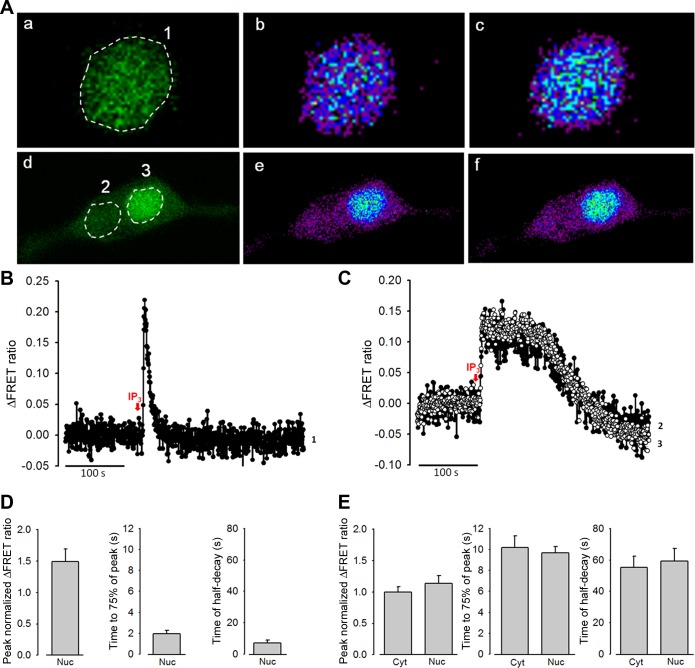Fig. 3.
Effects of inositol 1,4,5-trisphosphate (IP3) on the nucleoplasmic and cytoplasmic Ca2+ increase in digitonin-permeabilized rat PASMCs. A: 2D confocal images of PASMCs cotransfected with D3cpv and 3NLS-D3cpv and permeabilized with digitonin in excess (a–c) and under controlled conditions (d–f). IP3 (10 μM)-induced FRET ratio changes were analyzed in different regions of interest (ROIs 1-3) in the nucleus, and the cytoplasm. Cells showing only cpV fluorescence (a and d), and Ca2+ mobilization before (b and e) and after (c and f) IP3 treatment. B: ΔFRET fluorescence ratio trace showing Ca2+ mobilization in the nucleoplasm of rat PASMCs (ROI 1) after IP3 treatment. C: ΔFRET fluorescence ratio traces showing Ca2+ mobilization in the cytoplasm (●) and nucleoplasm (○) of rat PASMCs (ROI 2 and 3, respectively) after IP3 treatment. D: statistical analysis of the peak normalized ΔFRET fluorescence ratio, time to 75% of the peak, and time of half-decay of IP3-induced Ca2+ transients in the nucleoplasm of rat PASMCs under excess permeabilization conditions.E: statistical analysis of the peak normalized ΔFRET fluorescence ratio, time to 75% of the peak, and time of half-decay of IP3-induced Ca2+ transients in the nucleoplasm and cytoplasm of rat PASMCs under moderate permeabilization conditions.

